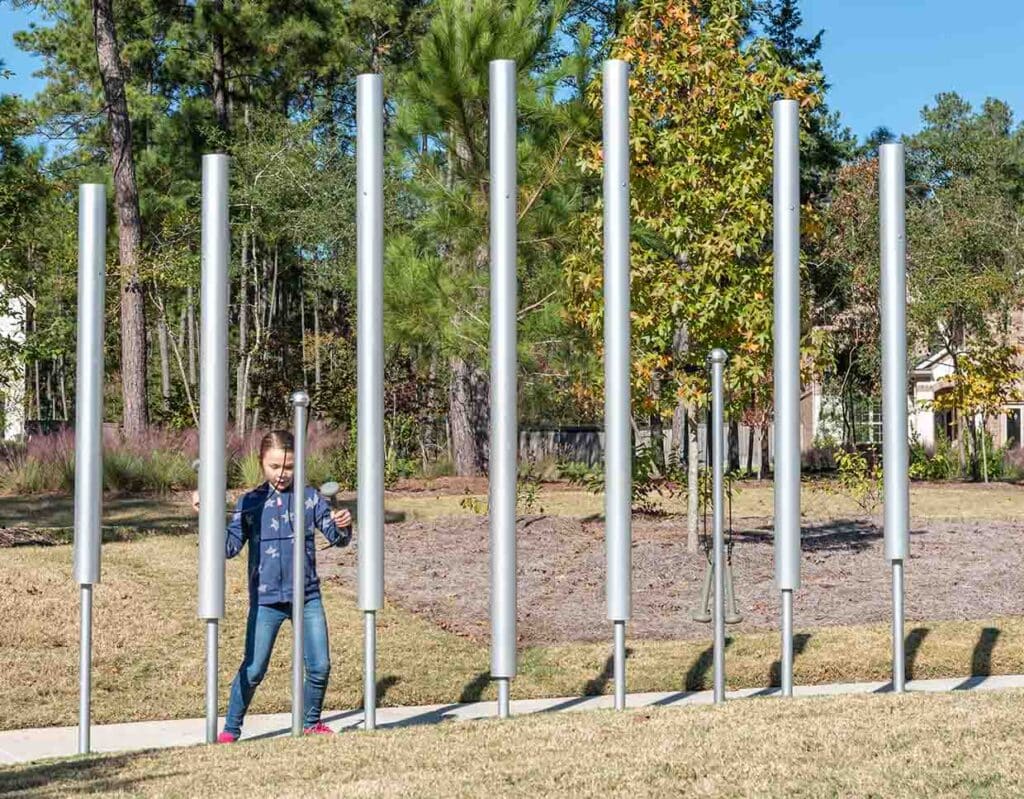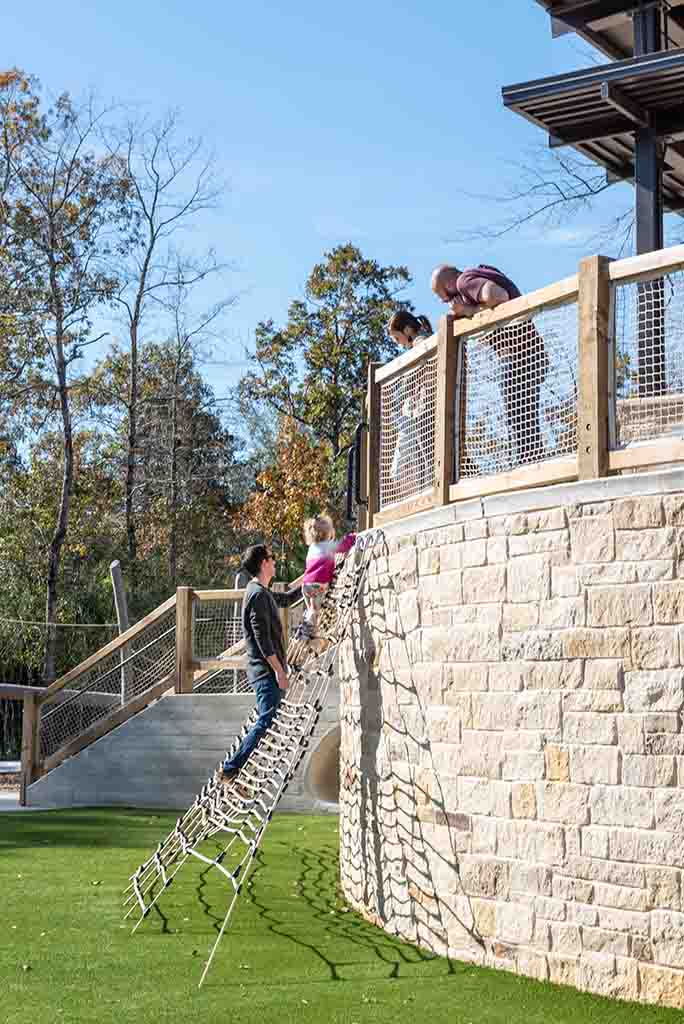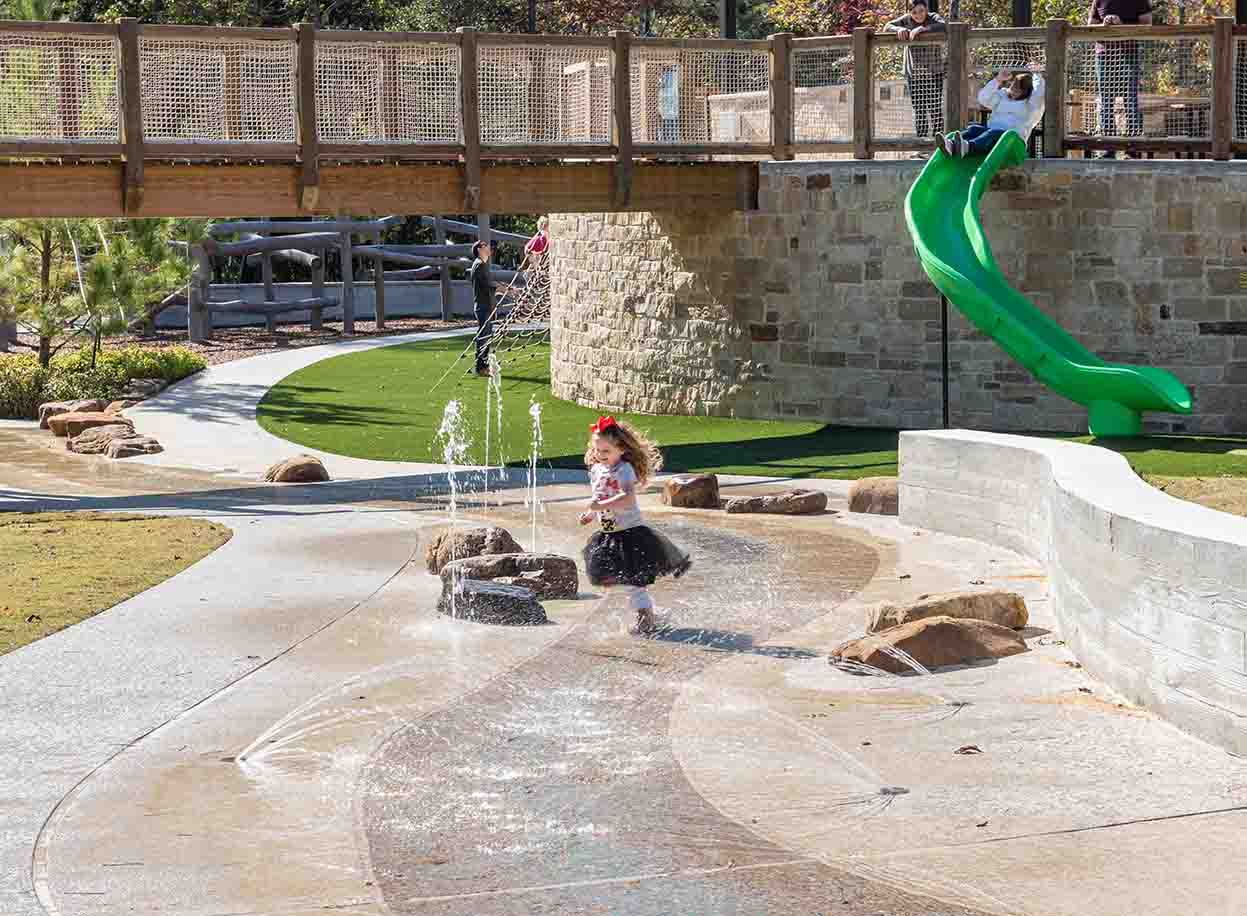BEST PRACTICES
THE VALUE OF PLAY: 5 WAYS TO MAKE PLAYGROUNDS IMMERSIVE
Author: Elizabeth Gilbert, Managing Principal
The need for play is often underestimated in our society as just a way to entertain children or run off their excess energy. The playground offers so much more; it's an opportunity for children to develop valuable skills that they will build on throughout their lives. This article will outline 5 ways to make playgrounds immersive through thoughtful design.

OVERVIEW
Through play, children have an opportunity to exercise their imaginations and discover new places, developing critical skills they will use throughout their lives. There has been extensive research done on play which has demonstrated that it provides an essential developmental foundation for growing minds, fostering creative problem-solving skills in addition to building social skills and emotional intelligence.
A successful park design understands the value of play and how best to create an environment that engages, accommodates, and nurtures. Stimulating playgrounds are more than a simple play structure, slide, swing set and fall surface; playgrounds should inspire creativity, encourage exploration, and provide an exciting environment in which to play. Playground design should be an integrated play sequence combining six key development components: cognition, dexterity, physical strength, imagination/creativity, emotional strength, and social development. Below, we consider each of these components and how playgrounds can support child development. It becomes clear that all are equally important and very much intertwined; however, playgrounds can be designed to not only facilitate but actively encourage them all at once.

COGNITIVE STRENGTH
Cognitive skills are the key building blocks for a child’s brain development, providing them with perception and decision-making abilities. Opportunities for play strengthens cognitive development in children as it encourages exploration, stimulates sensory awareness, promotes memory recall and even assists in language development. There are many play elements that can foster cognitive strength through constructive play. Movement and physical activity stimulate the brain; swinging, climbing and spinning can also teach children how their body moves through space. Another important element is sensory play, such as auditory or tactile, which can improve development of the senses and hand/eye coordination. Incorporating cause and effect play elements, such as swings or teetertotters, in a playground design helps a child to understand that their actions elicit varying results which is an important developmental skill.
DEXTERITY
Dexterity is inclusive of both gross motor skills and fine motor skills. Gross motor skills are required to control the body’s muscles for larger movements. Activities that encourage agility, balance and coordination improve muscle tone and muscle control. Climbing, crawling, swinging on monkey bars or using a ladder help to develop these abilities. Fine motor skills involve the movement of the small muscles in the hand and wrist. These are essential for everyday tasks such as holding a pencil or brushing your teeth. Developing the power grasp through elements such as grabbing the ladder or monkey bars will improve hand strength which leads to accuracy and precision over time.

PHYSICAL STRENGTH
Perhaps the simplest development component to understand and see is the physical aspect of play. If you visit any playground, you can easily observe running, chasing, jumping and climbing activities. Children are engaged, building muscle strength, improving agility and burning energy. Beyond the visible improvements, unseen cognitive benefits are also occurring through the reduction of stress and anxiety leading to improved mental and physical health. Additionally, just being outdoors promotes better health though fresh air, activation of all five senses and the absorption of Vitamin D to promote healthy bone development. Outdoor play creates lasting health benefits that extend far beyond the playground.

CREATIVITY
Playtime is essential for children to develop their minds, explore new ideas and express themselves. That's why playgrounds should be designed with imaginative play at the forefront for both individual and group play. Themed play areas like pirate ships or space rockets offer children an exciting narrative as they explore new worlds while simple features such as sandboxes and chalk let children become authors of their own stories. Unconventional playgrounds are becoming very popular because they allow children to use their imaginations and take risks on how to interact with the playground. Through creative play, children discover and learn critical decision-making skills while having fun. Fun is something we could all use more of; after all, “creativity is intelligence having fun,” according to Albert Einstein.

EMOTIONAL STRENGTH
Developing emotional strength is an important skill for children to learn, and the playground can be a great place to practice! On the playground, children learn to manage and express their feelings including anticipation, fear, frustration and humor. Playful challenges help boost self-confidence and self-esteem as they are mastered while also providing physical exercise. Emotional strength is also supported through free play and imagination. Tunnels and enclosed spaces can offer places for pretend play that encourage children to explore their feelings and outcomes.
CONCLUSION
Social development is crucial to childhood development. Playing encourages social skills like communication, negotiation and cooperation. Through group interaction, children begin to learn the cultural rules and roles on the playground, learning to relate to one another and develop relationships. Play components that encourage group play help children learn to play together, developing skills in sharing, taking turns, inclusivity and conflict resolution. It is important to note that playing alone is also very important to social development and should be encouraged on the playground. This solitary play spurs independence while encouraging children to use their imagination to alleviate boredom. Additionally, a child playing alone will observe the interactions of groups and learn key social norms.
Playgrounds are a cornerstone for childhood development, crucial for their growth and provide an outlet to nurture their creativity, problem-solving skills, social interactions and self-confidence. Also, they are places for discovery and offer an environment to challenge children, spark their imagination and truly engage them from multiple facets. Playgrounds offer much more than slides and swings; they provide a vibrant environment where imaginations can soar, and critical thinking skills are developed. The design of playgrounds should be thoughtful and approached as a creative and immersive experience to encourage all six key development criteria. Not only will children develop these fundamental skills, but they will also find themselves in an outdoor environment that is fun, exciting and removes some of the stresses of their structured schedules. Through such play, children create lasting memories, find joy and burn off some of that excess energy which is something all parents and caretakers can appreciate!

